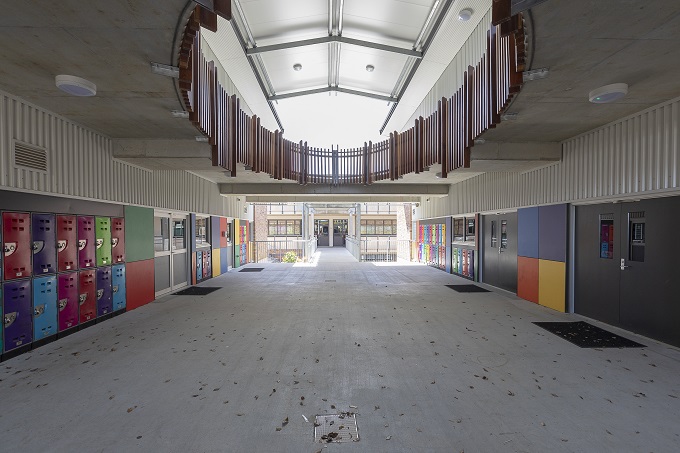
Being the new kid is always tough, but starting mid-term can be even more challenging. Here are some ways to welcome new students to your classroom.
Read the latest edition of School News HERE
1. Organise a peer school tour: your new student will most likely have been on a school tour with their parents and the Principal, but choosing a peer from your class to give the ‘real tour’ will immediately make the new student feel part of the school. Only other students will know the preferred bathrooms, the best days to order lunch, where to catch the bus home, when you can pick things from the kitchen garden and how hard to go for ‘crazy hair’ day.
2. Help them find their people: Similarly, pair up the new kid with reliable and friendly students to help make sure they get to the right classrooms. If you designate a different child each day for a week or two, it’s a relatively non-intrusive way for the new student to spend a little bit of time with a variety of people, male and female, from different ‘groups’ which will help them find their place sooner.
3. Class photo: Arrange for the new student to have a copy of the class photo so they can see the other students and learn their names.
4. Be approachable: Be available to the student and their family and let them know when and how they can find you if they need some privacy to discuss any concerns or challenges they’re facing.
5. For primary students, a fun and simple way of helping the new kid learn everyone’s name is by standing everyone in a circle. Someone starts with a ball, says their own name then the name of another student. They throw the ball to that person. They then repeat their name and choose someone else to throw it to, and so on.
6. Welcome sign: Ask the class to write a short message and sign their names on a large piece of paper or card and leave it on the new student’s desk.

7. Establish class ground rules: make sure the student knows of any classroom rules and what is considered acceptable behaviour. You can do this as a group activity, especially in primary school, which will also help other students take ownership of classroom behaviour.
8. Include the family: try and welcome the whole family – especially if they have just moved to the area and don’t know anyone. Direct them to a class or parent representative or make sure they know about particular cultural aspects of the school – how to order canteen lunches, where to park, how to volunteer, upcoming school events, school or class-based Facebook groups. Where appropriate, let other parents and families know and inform the P&C so they can be welcomed.
9. Transition support: whether it is a primary student coming from overseas or a Year 11 student moving mid-year, chances are they may need some additional support in the early weeks. It might be as simple as an open-door policy for the student to ask questions, guidance for study skills or introducing them to the school chaplain. Being observant to their needs is key to helping them feel established sooner.
10. Get creative with ice-breakers: don’t just make the new kid stand at the front of the class and tell their life story, share the focus with the entire class by making it into a game. Try the name game (introduce yourself with alliteration ‘Studious Shannon’ or ‘Inquisitive Ian’), two truths and a lie (each person says two true things and one made up thing about themselves and the others have to guess the lie) or human bingo (create cards with options like ‘never seen snow’, ‘has more than one YouTube channel’ or ‘allergic to cats’).
Every person and every classroom is unique, but whether they are Grade 1 or 11 it’s vital that new students feel included and welcome. Flexibility is key for ensuring a great start for the new student in your class.







